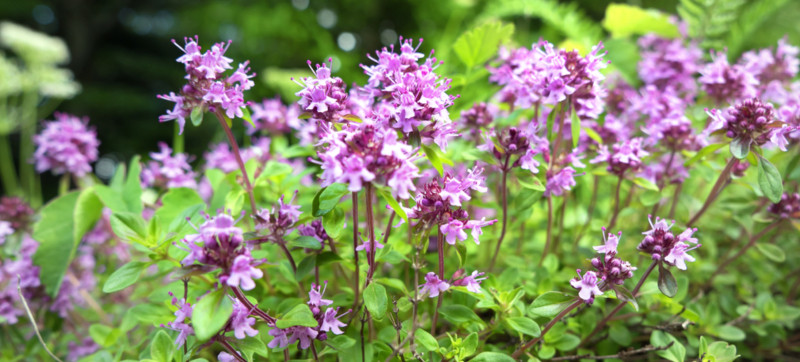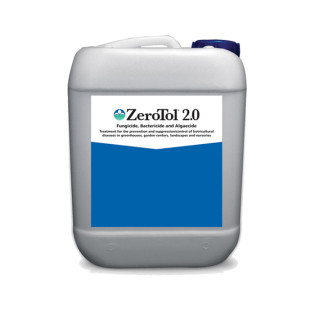
Red creeping thyme is a vibrant and versatile groundcover. It offers a lot of benefits for gardeners and nature enthusiasts alike. In this blog we’ll dive into the origins of red creeping thyme and its growing popularity. Below is detailed guidance on growing this remarkable plant in your garden or lawn.
Red creeping time is alluring to gardeners of all varieties. From new hobby growers to seasoned vets, this plant is the ultimate ground cover solution. Transform your green space into a lush, fragrant oasis.
Origins of Red Creeping Thyme
Scientists call this plant Thymus Serpyllum. It is a part of the mint family and has a rich history that spans continents and centuries. Starting in Europe and parts of Africa and Asia, this perennial has adapted to various climates. This makes it a resilient choice for gardens worldwide.
It has the ability to thrive in rocky, poor soil as well as a wide range of climates. It also has use in cooking! Generally other types of thyme are used in cooking, but this one is no slouch in the kitchen.
Why Gardeners Grow Red Creeping Thyme
The allure of red creeping thyme extends beyond its vibrant colors and fragrant aroma. There are several reasons gardeners love to use this groundcover:
- Red Creeping Thyme Lawn: Some people use this as a lawn replacement. Compared to traditional grass lawns, red creeping thyme offers a low-maintenance drought-tolerant option. Its dense mat prevents weeds, reducing the need for herbicides, and its tolerance for light foot traffic makes it an ideal lawn substitute. Plus your lawn will stand out in the sea of green as a bastion of red beauty. On top of that, you won’t have to worry about sitting in the sun pushing a lawn mower!
- Attract Bees and Butterflies: This plant is a haven for pollinators. Its flowers attract bees and butterflies, enhancing the biodiversity of your garden and supporting local ecosystems. Attracting bees and butterflies to your garden is beneficial for several key reasons. It significantly enhances the health and productivity of your garden ecosystem. Boost pollination, biodiversity, and environmental conservation are just a few reasons why having pollinators in your garden are key!
- Drought Tolerant: This plant thrives with minimal watering. This makes it an excellent choice for regions prone to dry conditions. Its drought tolerance also helps save water.
- Ground Covers: It has the ability to spread quickly and cover ground. This makes it a great solution for erosion control or filling in bare spots in the landscape.
Why You Should Grow Red Creeping Thyme
Putting red creeping thyme into your garden offers many benefits. It's not only very pretty but also environmentally friendly. Adding this in place of a regular lawn can reduce your water usage and landscaping. Plus, by attracting pollinators you're playing a huge role in helping local wildlife and promoting biodiversity.
Starting Red Creeping Thyme from Seeds
Growing red creeping thyme from seeds is a rewarding process. To start, consider the following steps:
- Timing: Begin in early spring, after the risk of frost has passed. Red creeping thyme seeds require light to germinate, so timing is crucial.
- Preparation: Choose a well-draining soil mix and a sunny location. Scatter the tiny seeds on the soil surface, pressing them gently without covering them with soil.
- Watering: Keep the soil consistently moist but not waterlogged. Using a spray bottle can prevent the seeds from being washed away.
- Germination: Seeds typically germinate in 14-28 days. Once seedlings emerge, ensure they receive plenty of sunlight and continue to keep the soil moist.
Growing and Caring for Red Creeping Thyme
Preferred Soil Type
Red Creeping Thyme thrives in well-draining, slightly alkaline to neutral pH soil. You want the soul pH range to be between 6.0 and 8.0. Sandy or gravelly loam is ideal, as it promotes good drainage while allowing roots to spread easily.
This plant does well in low-fertility conditions, as overly rich soil can lead to lush foliage at the expense of flowering. To improve drainage in compact or clay-heavy soils, add sand or fine gravel.
Planting Red Creeping Thyme
- Timing: Plant Red Creeping Thyme in the spring or early fall to avoid the extreme heat of summer. This gives the plant ample time to establish its root system before the growing season.
- Location: Choose a spot that receives full sun for at least six hours per day. It can tolerate partial shade but blooms best in full sun.
- Soil Preparation: Amend the planting area with sand or gravel if the soil does not drain well. Although it is adaptable to various soil types, ensuring proper drainage is crucial to prevent root rot.
- Planting: Space plants or seeds 8 to 12 inches apart to allow room for spreading. If starting from seed, lightly press the seeds into the soil without covering them, as they need light to germinate.
Watering and Feeding
- Watering: Water regularly after planting until it's established. Once mature, it is drought-tolerant and only requires watering during prolonged dry spells.
- Feeding: Fertilization is generally not necessary. If your soil is really bad, apply a balanced, slow-release fertilizer at the beginning of the growing season. This can help promote growth without going crazy.
Maintenance and Care
- Pruning: Prune or trim back after it flowers to encourage a dense growth habit and to maintain its shape. This also helps to rejuvenate the plant and can stimulate a second bloom in some climates.
- Weeding: Keep the area around your plant free of weeds, especially while the plants are young and establishing. Once fully grown, it acts as a natural weed suppressant.
- Mulching: Use a light layer of gravel or bark as mulch. Mulch helps keep the roots at a good temperature while maintaining the soil's moisture.
Pest and Disease Management
Red Creeping Thyme is generally resistant to pests and diseases. That doesn’t mean you shouldn’t be proactive! Use good practices such as proper spacing for air circulation and avoiding overhead watering. Small things like this can prevent most problems.
At Hydrobuilder we offer a wide range of items to help with pests and diseases. From cutting edge scientific solutions to good old fashioned beneficial insects! Learn more here!
Red Creeping Thyme Zone and Adaptability
Red creeping thyme is hardy in USDA zones 4 through 9 which is quite the range. Its resilience makes it an excellent choice for gardeners in a wide range of geographic locations. Ensure your gardening zone aligns with the plant's requirements for best results. Adjust care as needed based on local conditions.
This plant is perennial and should survive winter without special care in zones 4-9. In colder climates, a light mulch of straw or leaves can offer extra protection against freeze-thaw cycles. Be sure to remove this mulch in early spring to prevent moisture build up.
Some Final Thoughts
This is not just a plant; it's a great solution for sustainable, vibrant, and pollinator-friendly gardens. Red creeping thyme offers beauty, functionality, and green benefits. Following the guidelines can get you from starting seeds to providing proper care. From there you can enjoy the lush, fragrant splendor in your garden.
Growing this plant is a step towards creating a more sustainable and pretty outdoor space. Its ease of care, drought tolerance, and ability to attract beneficial wildlife make it an excellent choice for gardeners. Enhance your landscape while supporting the environment. Start your adventure today and witness the transformation in your garden.
If you have any questions or want to learn more, our master growers are always here to help! Give us a call at 888-815-9763 now!











